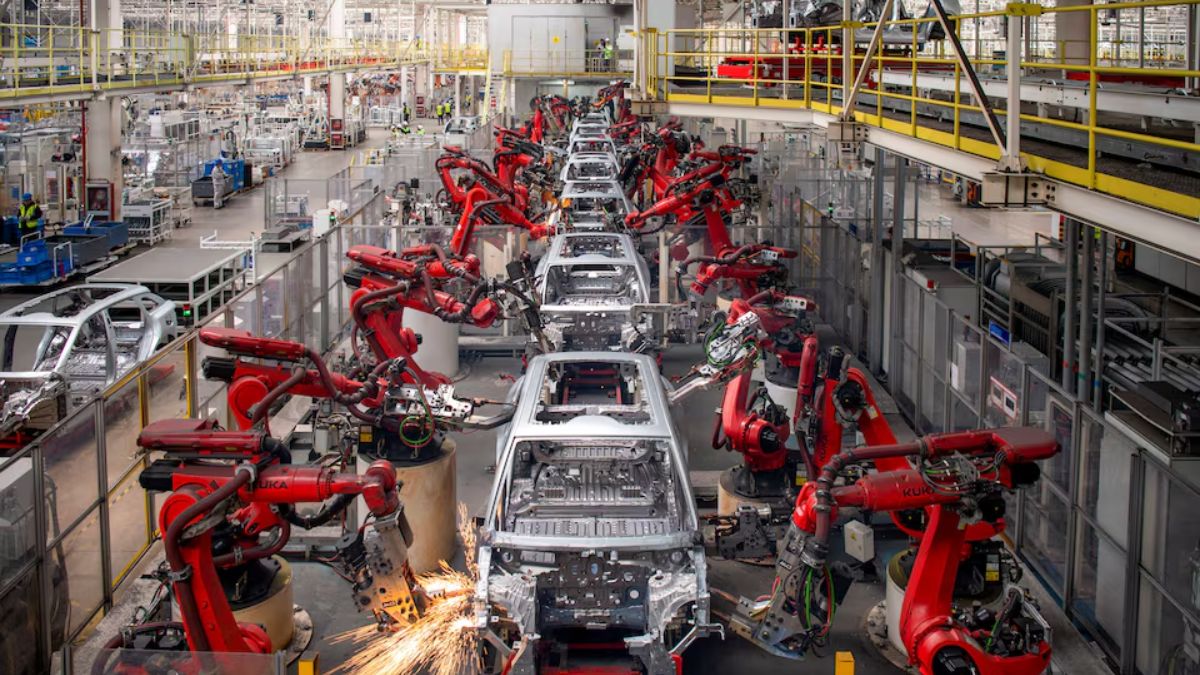China's May industrial profits fall 9% amid economic stress & trade war with US
)
China's Industrial Profits Plunge Anew, Signaling Economic Headwinds
Beijing: China's industrial profits experienced a significant downturn in May, reversing earlier gains and highlighting the fragility of the nation's economic recovery. Data released this week indicates a sharp decline compared to the same period last year, signaling renewed challenges for the world's second-largest economy. The slump is attributed to a combination of factors, including slowing factory activity, persistent deflationary pressures, and the ongoing crisis in the property sector, all contributing to weakened domestic and international demand.
Factory Activity Slows Amidst Economic Stress
The decline in industrial profitability is directly linked to a slowdown in factory activity. While specific figures vary depending on the reporting agency, the trend is consistent: Chinese manufacturers are facing headwinds. These include reduced export orders, partly stemming from lingering trade tensions, and a lack of robust domestic demand. The fragile trade relationship with the United States, despite attempts at de-escalation, continues to cast a shadow over the manufacturing sector, creating uncertainty and hindering investment.
Deflationary Pressures and the Property Crisis Weigh Heavily
Deepening deflationary pressures are further exacerbating the economic slowdown. Falling prices, while seemingly beneficial for consumers in the short term, can lead to reduced investment and production as businesses anticipate lower returns. This creates a vicious cycle, further dampening economic activity. The ongoing crisis in the property sector, characterized by developer defaults and declining home sales, continues to undermine overall economic confidence and contributes significantly to the decline in industrial profitability. The sector's woes have a ripple effect across various industries, from construction materials to home appliances, impacting demand and profitability.
A Glimmer of Hope: Retail Sales Show Unexpected Resilience
Amidst the prevailing gloom, there have been some positive signs. Retail sales growth unexpectedly picked up last month, suggesting a degree of resilience among Chinese households. This increase in consumer spending offers a glimmer of hope and indicates that domestic demand, while not robust enough to fully offset the negative factors, is not entirely collapsing. However, analysts caution against overinterpreting this single data point, emphasizing that a more sustained recovery requires broader policy support.
Expert Analysis: The Need for Targeted Policy Interventions
Dr. Li Wei, an economist at the Chinese Academy of Social Sciences, believes that the current situation necessitates targeted policy interventions. "While the government has implemented some stimulus measures, they have not been sufficient to address the underlying structural issues," Dr. Li stated. "A more comprehensive approach is needed, focusing on boosting domestic demand, supporting small and medium-sized enterprises, and addressing the systemic risks in the property sector. Simply relying on export-led growth is no longer a viable strategy."
Furthermore, Professor Emily Carter, a specialist in international economics at the University of Oxford, highlights the global implications. "China's economic slowdown has a significant impact on the global economy, particularly for countries that rely heavily on Chinese demand for their exports," Professor Carter explained. "The decline in Chinese industrial profitability could lead to reduced imports, impacting commodity prices and potentially triggering a slowdown in other economies. The international community needs to closely monitor the situation and be prepared to adjust their economic policies accordingly."
Historical Context: China's Economic Transformation and Current Challenges
China's economic transformation over the past four decades has been remarkable, transforming it from a largely agrarian society to a global manufacturing powerhouse. However, this rapid growth has also created significant challenges, including income inequality, environmental degradation, and an overreliance on investment-led growth. The current economic slowdown is a reminder that China's economic model needs to evolve to address these challenges and ensure sustainable long-term growth.
Looking Ahead: Navigating a Complex Economic Landscape
The outlook for China's industrial sector remains uncertain. While the government is expected to introduce further stimulus measures, the effectiveness of these measures will depend on their design and implementation. Addressing the underlying structural issues, such as the property crisis and deflationary pressures, will be crucial for achieving a sustainable economic recovery. The performance of China's economy in the coming months will have significant implications for the global economy, making it a key area of focus for policymakers and investors worldwide.
Originally sourced from: Firstpost
